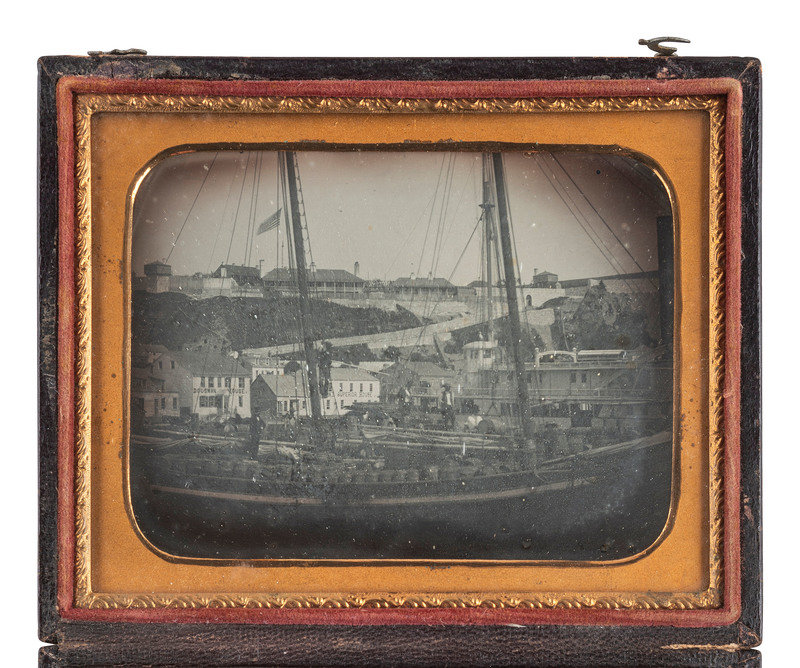Anonymous, quarter plate daguerreotype. (Good clarity with some clouding, few spots to plate, tarnish to edges.) Housed in a full leather case, original seals intact.
An important image, probably taken from what is today the Arnold Dock on Mackinac Island. In the foreground a two masted schooner, its deck covered with wooden casks, is being unloaded. A side-wheel lake steamer is docked beyond the schooner, it’s paddle box – and name – sadly not in the frame.
The camera also captures Main Street, and Fort Mackinac with its large garrison flag in the distance. Two long-gone hotels – the Dousman House and Lake Superior House are clearly visible. The former was named for Michael Dousman, an early fur trader and prominent citizen who used Mackinac as his base. After surviving through multiple renovations and name changes, the Lake Superior house fell into disrepair and was torn down in 1938.
Mackinac Island occupies a strategic choke point at the straits separating Lakes Michigan and Huron. Successively the French, British and Americans built forts to control access between the lakes. The French were the first, building a log fort on the mainland south and west of Mackinac Island. At the end of the French and Indian War, the British – fearing that the location of the French fort was not defensible -- built a new fort of native limestone atop a 150-foot-tall bluff on Mackinac Island in 1780-81. American troops were garrisoned at the Fort after the Revolutionary War in 1796. During the War of 1812, the British captured the fort, and adding significant additions including the blockhouses visible in this daguerreotype.
In 1814, an American expeditionary force of seven frigates carrying 700 troops attempted to recapture the Fort but were unsuccessful. With the Treaty of Ghent, American troops reoccupied Mackinac in July 1815 and gradually, its importance declined. For much of its 19th century history the Fort served as a fur trading post and jumping off point for Government funded explorations of the upper Great Lakes. From 1875-1895 the fort and island became the second United States National Park. In 1895 the Park was decommissioned, and ownership transferred to the state of Michigan. Today the fort is administered by the Mackinac Island State Park Commission, surviving as the best-preserved Revolutionary War era fort in the United States.



